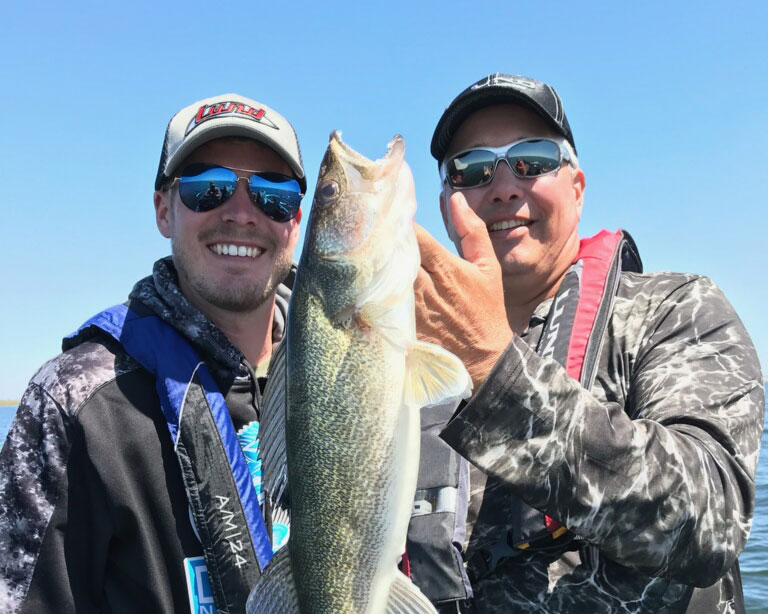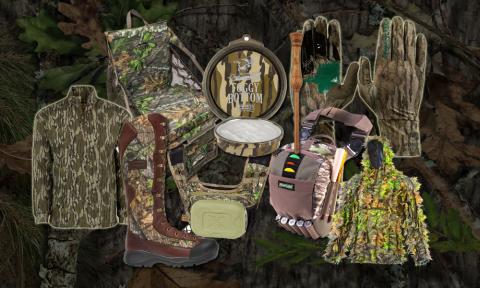
At this time of year, many of the lakes and rivers are still frozen, but the walleye usually will be moving toward their spawning areas. If you're fishing a reservoir that has any current, the walleye will start moving upstream. If you're fishing a lake, some lakes have better spawning habitats than other lakes. So, if you know where the walleye have wintered, you can fish along the route that the walleye will begin moving on to reach those better spawning areas.
At this time of the year, you can have great fishing, especially the more you know about the lake you're planning to fish. If you don’t know the lake very well, you can call the Fisheries Section of the state’s Game and Fish Department and ask to speak to the fisheries biologist who is responsible for that river, lake or reservoir. He’ll be extremely helpful on where to start fishing to catch the walleyes in that lake at this time of the year.
Depending on where you live, you'll often have some snow starting to melt in early March. As the snow melts and trickles into small streams and branches, it becomes highly oxygenated, which seems to fire-up the walleye to bite. However, the walleye never seem to be holding in the same place in February and March where I've found them the day before or the previous weekend. I think they have their track shoes on getting ready to make a run toward their spawning areas.
I know many anglers are tempted to call fishing guides, fishermen they may know around that lake and bait-shop owners to gather that information when fishing a new location. However, fishing guides like me and bait shop owners have a commercial interest in that information. Now, I'm not saying you won’t get good information from these people. But when you deal with the fisheries biologist directly who knows the fish in the lake you want to fish, he has no commercial interest in the information he’s giving you. I've found that biologists give me hard facts on what they’ve learned about the walleye movement in that lake at that time of year. So, the information from the fisheries biologist is untainted information. That biologist can tell you, “We've learned this from netting walleyes, fishermen’s surveys and research, so we will be real honest.” You can’t argue with scientific research and will find arguing with a scientist when he says, “After seven years of research, we've found the largest concentration of walleye are in this particular area of the lake at this time of year,” is tough. The scientists responsible for each walleye lake are probably contacted by fewer anglers than you think.
Walleyes are in different lakes for various reasons and different water conditions and often are in numerous locations at certain times of the year on lakes. That’s why I believe the best person to tell you where to find walleyes on the lakes you're fishing this weekend is the fisheries biologist responsible for that lake. You can get phone numbers and email addresses by calling or emailing the Fisheries Section of your Game and Fish Division.
When I was a young man starting out tournament fishing, I was 24-years old and fresh out of college and never had fished outside my home state. One of my first tournaments was on Lake Mille Lacs in Minnesota, a world-famous walleye and smallmouth fishery. I tracked down the Minnesota Department of Natural Resources fisheries biologist for the lake and told him when I planned to fish the lake. I asked him for suggestions as to what to look for, and what lures to fish. He told me what the walleyes were eating at that time, and the areas of the lake that usually produced the most walleyes at the time I would be fishing. I didn’t win the tournament, but I caught multiple walleyes that weighed more than 8 pounds each.
On the second day of the tournament, I didn’t have a limit, but I had two walleyes in my basket that weighed a total of 19 pounds. I quickly learned that the best information I could get on any lake I fished was to talk to the people in that state’s Department of Natural Resources. So, do yourself a favor. Use the internet to go to the state Fisheries Section for the state you're fishing, learn all you can about that lake, and email or call a biologist to get a ton of good information on where your chances are best for catching walleyes at that time of year on that lake.



























